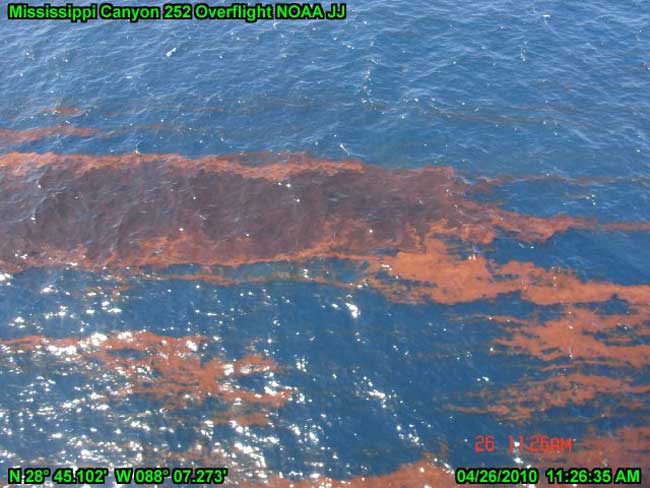Disaster Laws: Will Gulf Oil Spill Change Anything?

Earlier this week, Senator Charles Schumer (D-NY) responded to the continuing Gulf oil leak by proposing new legislative action that would raise the liability BP could face for the disaster. Sen. Schumer’s action is merely the latest move in Washington’s month-long reaction to the Deepwater Horizon explosion, and if history is any guide, it won’t be the last.
Throughout the last century, environmental and industrial catastrophes have often provoked an outraged citizenry to demand action from their elected officials, resulting in new regulations aimed at preventing future catastrophes. Experts point out, however, that many of those regulations failed to stop subsequent calamities, leading some to question whether the responses to the Gulf oil leak will have a lasting effect.
“Basically, you have a pattern of crisis, response, and retrenchment,” said Thomas McGarity, a professor of administrative law at the University of Texas at Austin Law School. “Ultimately, the response to the crisis doesn't produce as much change as would have been expected during the crisis. This has happened since the Progressive Era [1890s to 1920s].”
New era of crises?
The Department of the Interior has already responded to the oil leak by segregating the investigative and permit granting functions of the Minerals Management Service to prevent future conflicts of interest, but that’s probably just the beginning, said Jody Freeman, director of the Harvard Law School Environmental Law and Policy Program.
“You could imagine recommendations that go even further and revise the entire system of permitting,” Freeman told LiveScience. “You could imagine requirements for more comprehensive planning on the part of the oil industry and new requirements for redundant safety systems.”
At the very least, the government is likely to raise the $75-million liability cap that limits the damages BP would pay as a result of the leak, McGarity said.
Get the world’s most fascinating discoveries delivered straight to your inbox.
That momentum might also carry over into other arenas as well, with the Obama administration using the Gulf oil disaster as an example of how government regulations are needed to protect citizens from a wide range of business practices, McGarity said.
“What we're seeing now is a possibility of a new era. We're having so many crises, across so many areas of our domestic experience, that there's an opportunity for a new public interest era,” McGarity told LiveScience. “As they keep coming, the public is willing to accept this.”
Of course, not every analyst is quite so confident the Deepwater Horizon disaster has galvanized enough support for a large-scale change in regulatory law.
“There will definitely be a reevaluation in the wake of the Deepwater disaster, but I don't imagine dramatic reshaping of the law,” said Doug Kysar, a professor of torts, environmental law and risk regulation at Yale University Law School. “This is something that oil companies and insurance companies have learned to deal with over the last 20 years.”
The United States is too dependent on oil to impose regulations that might dissuade oil companies from doing business here, Kysar said. The oil companies could threaten to move their operations to countries with less strict regulations, an outcome that members of Congress, who might lose an election if oil company employees in their states and districts get laid off, will work hard to prevent, Kysar said.
Watering down the laws
Even if government agencies do impose new regulations, the agencies might not effectively enforce them, and those regulations might not have the power to stop future disasters anyway, said Jeffrey Rachlinski, a professor of administrative law at Cornell University Law School.
For instance, many U.S. legislators, in response to the current oil disaster, are proposing laws that were originally proposed in the wake of the Exxon Valdez spill, but were watered down or simply not followed, Rachlinski said.
“What we're doing now has a 'rearranging the deck chairs on the Titanic' feel to it,” Rachlinski told LiveScience. “Legislators are trying to craft legislation that already exists.”
In fact, Exxon Valdez is just one of a number of disasters that prompted a significant government response. Five particular calamities, some well-known and others more obscure, produced regulatory changes that still hold water today:
The Sinking of the RMS Titanic, 1912
Disaster: The supposedly unsinkable ship struck an iceberg that split the vessel in two; 1,517 people died due to a lack of lifeboats and tardy rescue attempts.
“The sinking of the Titanic was a big disaster, but people didn't die because the boat sank, they died because there weren't enough lifeboats,” said Beverly Sauer, a professor of law at Georgetown University.
Results: “Maritime law, life boat regulations, radio transmissions, they all changed. People forget that the Titanic led to significant regulations around the world,” Freeman said.
The United States passed the Radio Act of 1912 after the disaster, requiring all ships to maintain constant radio contact with nearby vessels.
*****
The Elixir Sulfanilamide Poisonings, 1937
Disaster: More than 100 people died after taking sulfanilamide, at that time used as an antibiotic, which had been mixed into the poisonous liquid diethylene glycol. Of course, its "manufacturers" didn't know the liquid was poisonous; they just needed to dilute the chemical into some liquid. “There were a number of incidents of fatal poisonings during the heyday of 'snake oil' sales. All kinds of untested remedies were being put out there,” Kysar said.
Results: After the poisonings, Congress passed the Federal Food, Drug and Cosmetic Act that authorized the Food and Drug Administration to regulate those products based on their safety.
“There was a salient public awareness that prompted swift legal action. It’s a familiar cycle in political science,” Kysar said. *****
The Farmington Mine Explosion, 1968
Disaster: Flammable gas led to a giant explosion within the Farmington, W. Va., mine, killing 78 miners.
“What you had was a series of very large explosions,” Sauer said. “Extraordinary levels of explosive gases.”
Results: Although it took 10 years, but because of this explosion Congress eventually passed the 1978 Mine Act, which regulated the types of gases in the mines, the ventilation systems and the numbers of exits.
“Without regulations, the miners wouldn't have the ability to speak against this,” Sauer said. “The importance of regulation is that you need something to back you up when you say, 'This is not safe.’”
However, the Mine Act did not regulate the location of those exits, a fact that came to prominence during the 2006 Sago mine disaster, Sauer said, when the collapse separated miners from the exit, leaving them unable to escape. And, of course, the explosion in a coal mine in West Virginia in April, which killed 29 miners, showed that the mining industry remains incredibly dangerous.
*****
The Love Canal Poisonings, 1978
Disaster: Hazardous waste flooded into the basement of residential houses built over a former industrial site, leading to numerous health problems for residents.
“It was a neighborhood in Niagara Falls, and over 20,000 tons of toxic waste was discovered,” Freeman said. “It was a residential neighborhood at the time, but before that, a company called Hooker Chemical dumped toxic waste into the ground before the housing development was built.”
The chemicals, including the toxic benzene, have been linked to miscarriages and birth defects in the area, according to the Environmental Protection Agency.
Results: Media coverage of the Love Canal poisonings led to the creation of the Comprehensive Environmental Response, Compensation, and Liability Act of 1980, better known as Superfund. Superfund established a trust fund that pays for the cleanup of sites contaminated with toxic waste.
“That law, for the first time, made the parties that handled the waste liable for the harm caused by the contamination,” Freeman said. “So it really allocated legal responsibility for the first time. And it made them strictly liable. All that mattered was that they were responsible for producing that waste, or dumping that waste.”
*****
The Exxon Valdez Oil Spill, 1989
Disaster: The oil tanker Exxon Valdez ran aground off the coast of Alaska, dumping almost 11 million gallons of oil into Prince William Sound.
Results: In response to the Exxon Valdez spill, Congress passed the Oil Pollution Act (OPA), which required oil companies to have plans to both prevent future spills, and contain them should a spill occur. Additionally, it created a Superfund-like trust fund to help pay for the cleanup of oil spills.
Basically, the OPA created a system of legal responsibility where the companies responsible for the spill would have to pay for the cleanup effort, and pay liability up to a cap,” Freeman said.
Legal action by Exxon also succeeded in lowering that cap. Exxon funded studies showing that juries award punitive damages irrationally, and thus unconstitutionally, Kysar said. The U.S. Supreme Court then used those studies, despite explicitly claiming they had not seen them, to rule that oil companies were not liable for more than the cost of what was lost at sea, Rachlinski said.


